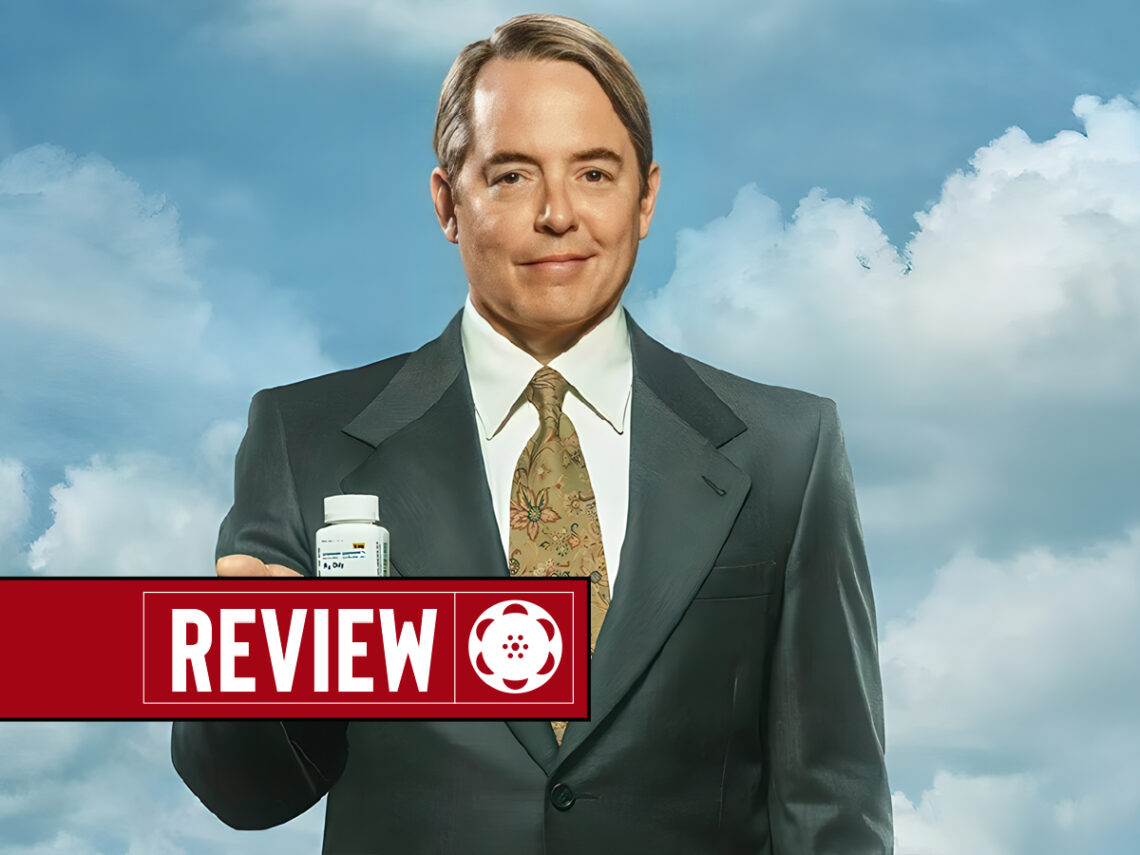The opening scene in Painkiller sets the stage with a lone Richard Sackler, played by Matthew Broderick, battling a relentless smoke alarm in his palatial mansion to ‘The Sound of Silence’, a striking contrast to an earlier interview featuring a tearful testimony from an OxyContin overdose victim’s mother. The tone is set—the showmakers are going for the emotional jugular.
Painkiller, the limited drama series on Netflix, is a creation of Micah Fitzerman-Blue and Noah Harpster, who has a lot of fun playing Curtis Wright, the FDA official who approved the highly addictive opiate before flipping to the other side.
Based on Patrick Radden Keefe’s New Yorker article The Family That Built an Empire of Pain and Barry Meier’s book Pain Killer: An Empire of Deceit and the Origin of America’s Opioid Epidemic, the six-episode limited series delves into the origins of the opioid crisis, with a spotlight on Purdue Pharma, the producer of OxyContin.
Comparisons with the 2021 Hulu miniseries Dopesick, created by Danny Strong, are inevitable. Both series dive into the origins, the unfurling devastation, the long-term impact, and the key players behind the opioid epidemic. While Dopesick takes a more serious and sombre approach, Painkiller is more dramatic and flashy. Painkiller also uses Uzo Aduba’s Edie Flowers—a character made for the show—to narrate the whole story, and that is just the first undoing of the series.
While film school professors will write off voiceover narration as the lowliest of low narrative choices, there have been many films that have proven any such aspersions wrong, be it at the hands of Christopher Nolan or Wong Kar-wai. But here in Painkiller, it is definitely used as a lazy tool that adds nothing to the series.
In Painkiller, the story of the opioid crisis undergoes a Wolf of Wall Street treatment, at least externally. There are lavish pool parties, frenzied sequences with characters going nuts on drugs, and dialogues akin to “greed is good”— one character makes another sniff leather stiletto and goes, “that’s the smell of money.”
The first two episodes meander a lot more than necessary to find its rhythm. In parts, Painkiller feels like a plagiarised essay which took something from the original and put it three paragraphs down to avoid getting caught. The result is a show that is all over the place, with plenty left out despite being so heavy on redundantly repetitive dialogue. Amid a few flashes of brilliance, the show struggles with its writing and pacing.
One of the greatest pleasures of viewing Dopesick is the tremendous subtlety in writing. Richard Sackler’s character reveals his real motivation while looking at a painting his uncle bought for millions. In his conversation with his then-wife, Beth, he says he hates it. When Beth asks why he keeps it in the bedroom, Richard mentions how his obsession with oriental art drove his uncle to buy such a “hideous” painting. This expository dialogue is shrewdly toned down. If you forgot to pay attention for a bit, you might go on believing the spiel he kept doling out till that point and think he really did have a messiah complex and just wanted to heal the wounded and the injured.
There is no such place for subtlety in Painkiller. Here Richard’s character is more obviously a greedy little weasel.
In Painkiller, everything is repeated. If one were to hyperbolise as much as the show, then you could say Painkiller is heavily montaged. While the stylistic editing looks cool in parts, you don’t need so many hip-hop sequences to drive the point home. You just saw Glen is not doing great. You don’t need a flashback barely two minutes later to see again why!
Painkiller indulges in way too much visual and verbal spoonfeeding. Whereas Dopesick hints at Sackler’s cunning use of addiction to build his empire, Painkiller visually equates his strategy to the explosion of a nuclear bomb, invoking the horrors of Hiroshima.
This story does make you wonder: how did the USA get away with being labelled as the ultimate land of dreams when it has been so corrupt and greed driven!? That is some strong PR right there. And it isn’t even a thing of some distant past. Right now, there is a sweeping shortage of the semaglutide medication Ozempic, which is allegedly also being sold on the black market. Ozempic is used to treat type-2 diabetes but also acts as an appetite suppressant, and several public figures have been suspected to be using it for weight loss measures.
Despite loving Aduba, it is hard to like her scenes in Painkiller because they invariably take you out of the moment. Flowers is altogether too preachy and holier-than-thou. And her presence drastically cuts down the time given to other players who were more active participants in the events being depicted.
Taylor Kitsch, as Glen Kryger, a regular Joe who becomes addicted to Oxy after an accident, delivers a good performance. But some of his journey will bring Kaitlyn Dever’s Betsy Mallum from Dopesick to mind. The same goes for West Duchovny’s Shannon Schaeffer, who represents the same viewpoint we got in Will Poulter’s Billy Cutler. The only thing differentiating Shannon from Billy is the streak of misguided feminism Dina Shihabi’s Britt infuses her with. John Ales’ turn as the stoic Dr Gregory Fitzgibbons stands out.
Painkiller has a few good performances and an outer swanky sleekness going for it. But they might not be enough to make it as memorable as its more momentous cousin. If you watch Painkiller first, catch up on Dopesick to fill in the gaps in the story. But if you’ve seen Dopesick and loved it, you can skip Painkiller unless you are going through a severe case of withdrawal.
